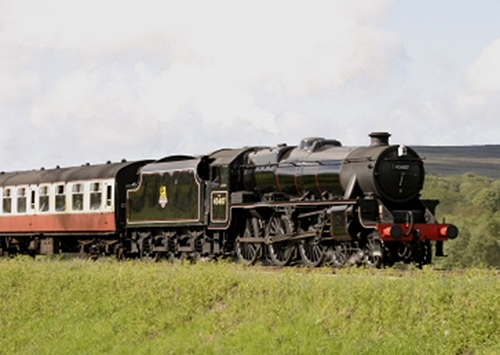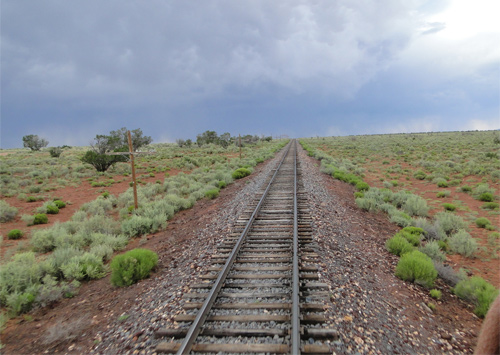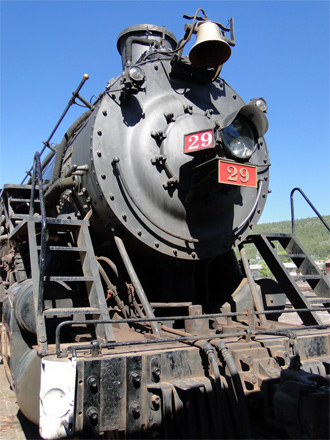
Source: Steam Locomotive 45407, Tom Curtis, FreeDigitalPhotos.net
A nation's infrastructure consists of the basic support systems needed to keep an economy going, including power, communication, and transportation, water, sanitation, and education systems. The more sophisticated the infrastructure, the more developed the country. One of the most important systems in the infrastructure is transportation. One of the patterns geographers look at is railroads to get an idea of how transportation affects economic growth.

Source: Steam Locomotive 45407, Tom Curtis, FreeDigitalPhotos.net

Source: Tracks 1, Nancy Dupuy, Pics4Learning
The last spike of the Unites States' Transcontinental Railroad was put in place on May 10, 1869. For the first time in history a single, continuous train route linked the eastern and western United States together. This route would transform the American frontier.
In 1891, the Russians followed the American lead and began to construct the Trans-Siberian Railroad in order to bring together the territory of the Russian empire and gain access to the rich natural resources in its eastern regions. The Trans-Siberian Railroad's impact was very similar to that of the Transcontinental Railroad. Each railroad opened a frontier, united a country, and sparked growth. Together these two railroads demonstrated the economic power of efficient transportation.

Source: Grand Canyon Railway, Nancy Dupuy, Pics4Learning